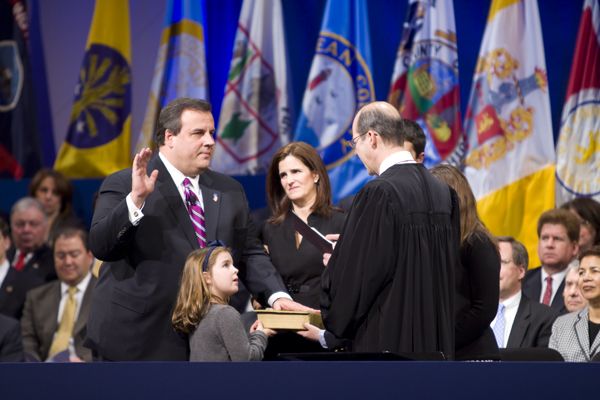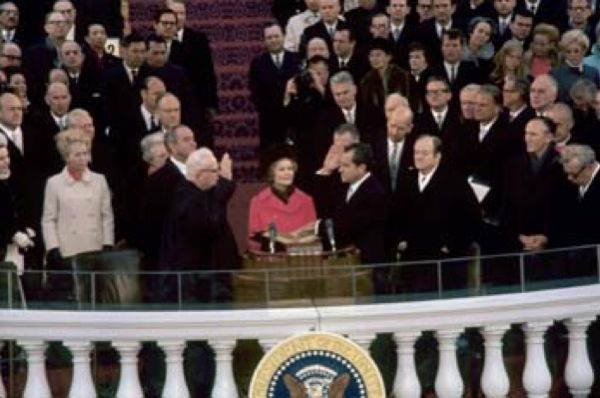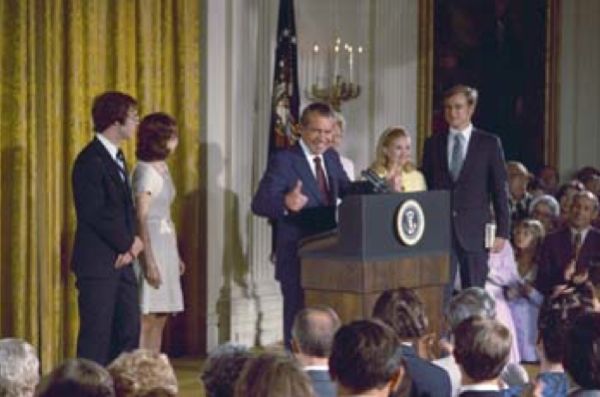DEP Water Supply Advisory Group Briefed on Climate Change Impacts
DEP Says More Delay Expected In Update of Long Awaited Water Supply Plan
DEP Says Gov. Christie’s Office Directly Involved
[Update below]
The NJ Water Supply Advisory Council met Friday (5/16/14) for their regular monthly meeting, this time at the NJ American Water Co.’s Canal Road treatment plant.
Hot issues on the agenda included:
- a scientific briefing on the effects of climate change on NJ water supply, demand, and infrastructure
- the status of releasing the Update to the State Water Supply Master Plan
- discussion of DEP’s new “resiliency ” approach and Asset Management Guidance
- discussion of revisions to technical formulas for estimating demand from development and “Firm capacity”
Here’s a quick summary of the mostly bad news that emerged from the meeting – wonks may want to continue reading for a brief discussion of each bullet provided below:
- climate change is happening now, but continues to be ignored by Gov. Christie and all things DEP;
- the update of the Water Supply Plan is bogged down in the Gov.’s Office politics & incompetence;
- DEP continues to rely on ineffective voluntary guidance to implement what are largely rhetorical (PR) infrastructure resiliency and asset management policies;
- water companies are pressuring DEP to relax technical assumptions regarding water demand in order to promote more new development despite water supply and infrastructure deficits; and
- the findings & policy implications of a recent Rutgers/NJ Future Report regarding NJ’s water infrastructure crisis were not on the radar screen of the WSAC.
- Climate Change impacts
Dr. Anthony Broccoli from Rutgers made a presentation that focused on: 1) increasing temperatures; 2) changing patterns of precipitation; and 3) sea level rise.
As we previously wrote, the Christie Administration is not addressing these serious issues in any meaningful way.
Dr. Broccoli then outlined various mitigation, adaptation, and geo-engineering response options.
I’ve seen it several times now and it has gotten press coverage – it is Broccoli’s canned presentation – so I will not go into details again here. All I’ll say is that perhaps Broccoli should consider presenting his science in the context of the policy needs of his audience. The farmers have different needs than the water supply managers, yet his presentation to both groups is virtually identical.
All the effects of climate change Broccoli outlined impact the available supply and demand for water, and will require that infrastructure be upgraded to adapt to various aspects of climate change, particularly sea level rise and increased frequency and severity of heavy rainfall and river/stream flooding.
[Brocolli noted that land use changes and increased impervious surfaces alter hydrology and exacerbate impacts.]
The presentation was unusually well attended (literally standing room only crowd, including a member of the press!) and there was a good discussion by members of the WSAC and attendees raised good questions, including:
1) Warmer temperatures will increase water demand, lengthen the growing season, and thereby increase evapo-transpiration. Projected extended dry spells, punctuated by more frequent and severe heavy rainfalls, will result in less recharge and more runoff. These dynamics will reduce stream flows and groundwater levels, putting more pressure on an already stressed natural ecosystems and infrastructure;
2) The same dynamics will “put a premium on water storage”.
3) The current regulatory regime relies on statistical constructs (e.g. 100 year rainfall event, delineation of the flood hazard area; drought and water availability; flood elevations (FMA BFE’s and insurance FIRM’s); stream flows (passing flows), Safe Yield, assimilative capacity, etc) ) that are no longer scientifically valid or adequately protective.
The statistical concept of “stationarity” is no longer valid because climate change has changed the underlying causal dynamics. The future will not be like the past. Projections of future conditions can not be based on time series data from the past. This requires a radically different approach to policy – along lines of what Broccoli called the engineering “margin of safety”, but some call precaution.
4) Dr. Broccoli presented 1 slide that compared the carbon emissions from various carbon fuels per unit of energy produced. The Broccoli data slide showed that natural gas emitted less than half of the carbon emission that coal produces.
I called him on that slide as partially true but misleading in light of lifecycle analysis.
I asked him whether he was familiar with the research on lifecycle carbon emissions from natural gas and EPA’s recent findings of higher than expected ambient methane concentrations they trace back to gas production.
I asked him to put an asterisk on that data to note the current scientific controversy. He did not agree.
Surprisingly, Broccoli claimed that lifecycle analysis was a new scientific development he was not familiar with. (Note: while at DEP, I worked with researchers on product lifecycle analysis in the early 1990’s)
5) The issue of the need for additional treatment was ignored (but did get some attention later during the discussion on the recent Drinking Water Quality Institute meeting).
6) I asked DEP and the individual members of the WSAC, particularly the municipal and private water companies, specifically when they would start to implement the climate science in water supply management decisions. I criticized the State’s lack of leadership. I noted that there was an undue concern about costs to the public, but that when I was at DEP in the late 1980’s and early 1990’s, we quadrupled the cost of environmentally sound solid waste management, as a result of leadership from the Governor on down.
Response: crickets.
- What ever happened to the Update of the Water Supply Master Plan?
Let me put this issue in context by quoting the recent legislative testimony of former DEP Commissioner Mark Mauriello:
“…we have a State Water Supply Plan that is 17 years old. It’s an embarrassment… [The] Water Supply Management Act requires that this plan be updated every five years. It hasn’t been updated since 1996. When I took over as Commissioner and had the authority to really boss people around, I had our Water Supply Division, in one year, complete a final draft update of that plan, which was being reviewed in December of ’09. Unfortunately I ran out of time due to the circumstances of the election… that plan has languished. And the word from DEP now is that they have ‘parked the plan.’ That’s a quote from the highest levels of the agency. We have to get the plan out of park.” ~~~ (8/15/13, hit link for complete hearing transcript)
I felt bad for Jeff Hoffman, DEP’s representative to the WSAC.
Jeff was asked point blank about the status of the Update to the Water Supply Master Plan.
Jeff honestly replied that the draft Plan was done and is in the Gov.’s Office. Jeff said that the draft Plan Update has not moved and is not going anywhere.
Jeff went on to note that DEP has had to brief a new cast of policy people in the Gov. Office, who continue to raise questions and have ideas about “new directions and recommendations on how to change it”.
This fits the paradigm, at best, outlined in the NJ Spotlight story “What’s wrong with Christie’s government” and at worst the model of incompetence and political decision-making exposed by the GW Bridge scandal.
- Relaxing water demand criteria for new development
The WSAC has formed a Committee to look into the current DEP and residential site improvement standards (RSIS) regulatory requirements for estimating water demand from new development. This was euphemistically and misleadingly described on the meeting agenda as “Firm Capacity/RSIS Subcommittee Report”.
The intent seems to be to relax these demand projections to make it cheaper and easier to issue water allocation permits to new development and to back DEP off enforcement of exceedences of water allocation permits (look at DEP database here).
Water purveyors – and developers – argue that actual water use is far less than the amount assumed under various regulatory demand estimation methods (approximately 100 gpd per capita).
If these assumptions are relaxed, that would “free up” or create enormous new water capacity to serve new development and otherwise offset current and projected deficits that limit development.
Other water officials opposed the current DEP method to base compliance on the highest monthly water use over a 5 year period. They complained that sometimes they have an anomalous “bad month” with unusually high water demand.
Jennifer Coffee of Stonybrook Watershed – a new WSAC appointee – questioned what this means, especially in light of the impact of low flows on aquatic life in streams.
This is a really bad idea that needs to be strangled in the crib.
If water companies and developers want more capacity freed up, they should start with aggressive water conservation measures and fixing the leaks that cause losses in the range of 20 – 30% in some water systems.
- Rutgers – NJ Future Reports 0n NJ’s Infrastructure Crisis
I was really surprised that these important Reports were not on the meeting agenda and that members were not aware of it. See:
- Rutgers: Water Infrastructure in New Jersey’s CSO Cities: Elevating the Importance of Upgrading New Jersey’s Urban Water Systems
- NJ Future: Ripple Effects
I had to coax WSAC member and Rutger professor and Report author Dan Van Abs to even mention them.
The Report should be required reading for all water resource professionals;, public officials, journalists and environmentalists.
The WSAC will next meet on June 20 – location not set.
[Update 5/19/14 – With respect to point #3 above, I’ve written about but forgot to mention at WSAC meeting that President Obama’s Executive Order on Climate Change Adaptation includes a new policy about projection of future conditions, including:
Section 1. Policy. The impacts of climate change — including an increase in prolonged periods of excessively high temperatures, more heavy downpours, an increase in wildfires, more severe droughts, permafrost thawing, ocean acidification, and sea-level rise — are already affecting communities, natural resources, ecosystems, economies, and public health across the Nation. These impacts are often most significant for communities that already face economic or health-related challenges, and for species and habitats that are already facing other pressures. Managing these risks requires deliberate preparation, close cooperation, and coordinated planning by the Federal Government, as well as by stakeholders, to facilitate Federal, State, local, tribal, private-sector, and nonprofit-sector efforts to improve climate preparedness and resilience; help safeguard our economy, infrastructure, environment, and natural resources; and provide for the continuity of executive department and agency (agency) operations, services, and programs.
[…]
(ii) reform policies and Federal funding programs that may, perhaps unintentionally, increase the vulnerability of natural or built systems, economic sectors, natural resources, or communities to climate change related risks;
NJ needs an adaptation policy.
NJ DEP should be systematically reviewing exactly the type statistically based regulatory constructs I briefly mentioned above in light of projected climate change conditions.



